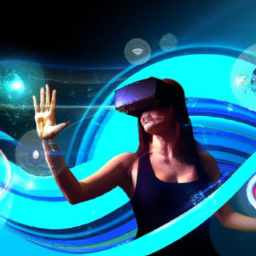The Role of AR and VR in Immersive Marketing
In today’s digital age, the marketing landscape is constantly evolving. Companies are always on the lookout for new and innovative ways to reach and engage with their target audience. One such breakthrough technology that has gained significant traction in recent years is Augmented Reality (AR) and Virtual Reality (VR).
What is AR and VR?
Let’s start with a quick definition. Augmented Reality (AR) is a technology that overlays digital content on top of the real world, enhancing our perception and interaction with it. Virtual Reality (VR), on the other hand, creates an entirely simulated environment, immersing users in a virtual world.
Creating Immersive Experiences
So, how do AR and VR play a role in creating immersive marketing experiences? Let’s explore their individual contributions:
AR: Enhancing the Real World
AR allows businesses to create interactive and engaging experiences by adding virtual elements to the real world. Imagine browsing a catalog and using your smartphone to see how that new piece of furniture would actually look in your living room before making a purchase. AR can make that happen! By enabling potential customers to visualize products in their own environment, AR bridges the gap between the physical and digital worlds, increasing customer engagement and boosting sales.
VR: Escaping into a Virtual World
VR, on the other hand, provides a fully immersive experience by transporting users into a virtual world. Imagine attending a virtual fashion show, where you can explore the latest designs, interact with models, and even make purchases without leaving your home. With VR, businesses can create memorable experiences that leave a lasting impression on their target audience. For example, real estate agents can give potential buyers virtual tours of properties, enabling them to walk through each room and experience the space without actually being there.
The Benefits of AR and VR in Immersive Marketing
Integrating AR and VR into marketing strategies offers several significant benefits:
Increased Customer Engagement
AR and VR provide an interactive and captivating experience, grabbing customers’ attention and keeping them engaged for longer periods. This leads to higher brand recall, improved customer loyalty, and increased chances of conversion. When customers actively participate in an immersive experience, they become emotionally connected to the brand, making them more likely to remember and choose it in the future.
Precise Targeting and Personalization
AR and VR technologies allow marketers to tailor experiences to individual customers, catering to their preferences and needs. By analyzing customer data, businesses can create personalized virtual experiences that resonate with their target audience on a deeper level. This personalization not only enhances the customer experience but also increases the chances of driving conversions and sales.
Elevated Brand Perception
By adopting AR and VR, businesses position themselves as innovative and cutting-edge. These technologies showcase a forward-thinking approach to marketing, making a brand stand out from competitors. By providing immersive experiences that go beyond traditional methods, companies can elevate their brand perception and leave a lasting impression on customers.
Data Gathering and Analytics
AR and VR platforms offer valuable insights and analytics on user behavior and preferences. Marketers can collect data on how users engage with the virtual experience, what they find most appealing, and what drives their decision-making process. This data can then be used to refine marketing strategies, further improving customer engagement and driving better results.
Conclusion
AR and VR are powerful tools that can revolutionize the way businesses connect and interact with their customers. By creating immersive marketing experiences, companies can grab attention, boost customer engagement, and elevate their brand perception. As technology continues to advance, we can only expect AR and VR to play an even more significant role in shaping the future of marketing.


